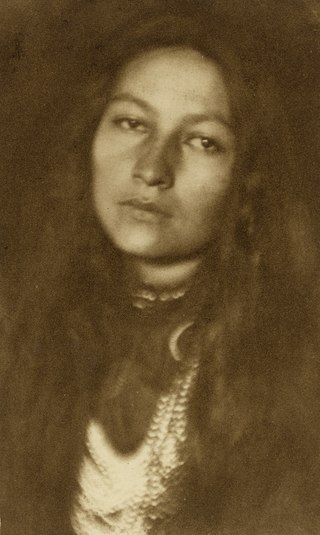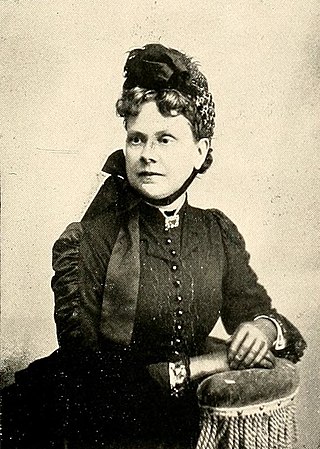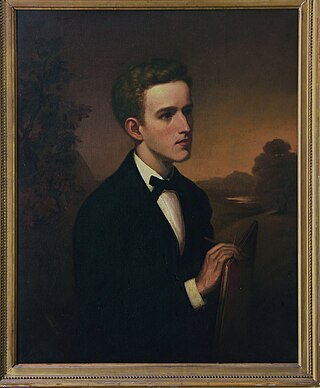Related Research Articles

Zitkala-Ša, also Zitkála-Šá, was a Yankton Dakota writer, editor, translator, musician, educator, and political activist. She was also known by her Anglicized and married name, Gertrude Simmons Bonnin. She wrote several works chronicling her struggles with cultural identity, and the pull between the majority culture in which she was educated, and the Dakota culture into which she was born and raised. Her later books were among the first works to bring traditional Native American stories to a widespread white English-speaking readership.

The American Indian Movement (AIM) is an American Indian grassroots movement which was founded in Minneapolis, Minnesota in July 1968, initially centered in urban areas in order to address systemic issues of poverty, discrimination, and police brutality against American Indians. AIM soon widened its focus from urban issues to many Indigenous Tribal issues that American Indian groups have faced due to settler colonialism in the Americas. These issues have included treaty rights, high rates of unemployment, the lack of American Indian subjects in education, and the preservation of Indigenous cultures.

Dennis Banks was a Native American activist, teacher, and author. He was a longtime leader of the American Indian Movement, which he co-founded in Minneapolis, Minnesota in 1968 to represent urban Indians.

The Women's National Indian Association (WNIA) was founded in 1879 by a group of American women, including educators and activists Mary Bonney and Amelia Stone Quinton. Bonney and Quinton united in the 1880s against the encroachment of white settlers on land set aside for Native Americans in Indian Territory. They drew up a petition that addressed the binding obligation of treaties between the United States and Native American nations. The petition was circulated for signature in sixteen states and was presented to President Rutherford B. Hayes at the White House and in the U.S. House of Representatives in 1880.
Josephine Sophia White Griffing was an American reformer who campaigned against slavery and for women's rights. In Litchfield, Ohio their home was a stop on the Underground Railroad and she worked as a lecturer for the Western Anti-Slavery Society and Ohio Women's Rights Association. At the end of the American Civil War she moved to Washington, D.C., to help work with the unemployed freedmen. Much of her work was done through the Freedmen's Bureau, where she worked as an assistant to the assistant commissioner and as an agent. Griffing was also active in several women's rights organizations, including the National Woman Suffrage Association.

Alice Cunningham Fletcher was an American ethnologist, anthropologist, and social scientist who studied and documented Native American culture.
Charles C. Painter (1833-1895) was an American abolitionist, Native American advocate and Congregational minister. The son of a Virginia planter who freed the people he enslaved before the American Civil War, Painter served on the faculty of Fisk University, dedicated to the education of African Americans. He was a prominent member of the Indian Rights Association, working out of the organization's Boston office, and, with Samuel M. Brosius, had a long career as an IRA agent and lobbyist in Washington, D.C.

Jonathan Baxter Harrison, was a Unitarian minister and journalist who was involved in many of the social causes of his day: abolitionism, Indian rights, forest preservation, and the cultural improvement of the working class. Best known for his realistic depictions of everyday American life, he is acknowledged as an important influence in the development of literary realism.
The Bureau of Catholic Indian Missions was a Roman Catholic institution created in 1874 by J. Roosevelt Bayley, Archbishop of Baltimore, for the protection and promotion of Catholic mission interests among Native Americans in the United States.
The Trail of Broken Treaties was a 1972 cross-country caravan of American Indian and First Nations organizations that started on the West Coast of the United States and ended at the Department of Interior headquarters building at the US capital of Washington, D.C. Participants called for the restoration of tribes’ treaty-making authority, the abolition of the Bureau of Indian Affairs, and federal investment in jobs, housing, and education.

The Red Power movement was a social movement led by Native American youth to demand self-determination for Native Americans in the United States. Organizations that were part of the Red Power Movement include the American Indian Movement (AIM) and the National Indian Youth Council (NIYC). This movement sought the rights for Native Americans to make policies and programs for themselves while maintaining and controlling their own land and resources. The Red Power movement took a confrontational and civil disobedience approach to inciting change in United States to Native American affairs compared to using negotiations and settlements, which national Native American groups such as National Congress of American Indians had before. Red Power centered around mass action, militant action, and unified action.

Vernon Bellecourt (WaBun-Inini) was a member of the White Earth Band of Ojibwe, a Native American rights activist, and a leader in the American Indian Movement (AIM). In the Ojibwe language, his name meant "Man of Dawn."

The National Congress of American Indians (NCAI) is an American Indian and Alaska Native rights organization. It was founded in 1944 to represent the tribes and resist U.S. federal government pressure for termination of tribal rights and assimilation of their people. These were in contradiction of their treaty rights and status as sovereign entities. The organization continues to be an association of federally recognized and state-recognized Indian tribes.
Henry Lyle Adams was an American Native rights activist known as a successful strategist, tactician, and negotiator. He was instrumental in resolving several key conflicts between Native Americans and state and federal government officials after 1960. Born on a reservation in Montana and based in Washington state for much of his life, he participated in protests and negotiations in Washington, DC and Wounded Knee, South Dakota.

John Welsh was an American merchant and diplomat who served as US Minister to the Court of St. James.
Pan-Indianism is a philosophical and political approach promoting unity, and to some extent cultural homogenization, among different Indigenous groups in the Americas regardless of tribal distinctions and cultural differences.

Herbert Welsh was a United States political reformer and worker for the welfare of the indigenous peoples of North America.
The Indigenous Environmental Network (IEN) is a coalition of indigenous, grassroots environmental justice activists, primarily based in the United States. Group members have represented Native American concerns at international events such as the United Nations Climate Change conferences in Copenhagen (2009) and Paris (2016). IEN organizes an annual conference to discuss proposed goals and projects for the coming year; each year the conference is held in a different indigenous nation. The network emphasizes environmental protection as a form of spiritual activism. IEN received attention in the news as a major organizer of the fight against the Keystone Pipeline and the Dakota Access Pipeline in the Dakota Access Pipeline protests.
The Friends of the Indian was a group that pushed for Indian assimilation during the late 19th and early 20th centuries. After dealing with "the Indian problem" through treaties, removal, and reservations, the Federal Government of The United States moved toward a method that is now referred to as assimilation. The Friends of the Indian group, which was largely connected to and intertwined with the Office of Indian Affairs within the Federal Government presented themselves as speaking on behalf of Native Americans who they viewed as unable to speak for themselves. They claimed that the best course of action for Native Americans was to assimilate them into the larger American culture, rather than allowing them to maintain their existing native cultures. The Friends used many tactics to push for said assimilation. Some went and lived with tribes, or contributed to the new discipline of anthropology to establish themselves as experts and push for cultural change. Some wrote books and essays about the poor treatment of Indians they had seen in the past and how this treatment might be improved. Others lobbied for legislative change through the Federal Government. The Friends of the Indian played a large role in the assimilation of American Indians by pushing for the passing of the Dawes Act, the Indian Citizenship Act, the creation and use of Indian boarding schools, and the continuation of an expectation that Indians could not speak for themselves.

The local history of Native Americans in Washington, D.C., dates back at least 4,000 years.
References
- ↑ "Indian Rights Association".
- ↑ "The Indian Rights Association, Native Protest Activity and the 'Land Question' in British Columbia, 1903–1916 | I-Portal: Indigenous Studies Portal". iportal.usask.ca. Retrieved 2023-10-17.